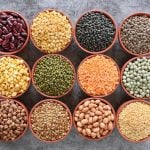By Commodity News Service Canada
July 27 (CNS Canada) – Feed grains are performing well in most of Saskatchewan but the parched south is dragging down averages for the rest of the province.
Overall in the province, barley is rated at 55 per cent good or excellent, 44 per cent fair or poor and one per cent very poor, according to the latest crop report from Saskatchewan Agriculture.
While a lot of the crop may be ear-marked for malt barley, a sizable amount will eventually end up being used as feed once quality tests are conducted.
Read Also
Feed Grains: Iowa Corn Growers President urges U.S. not to leave NAFTA
By Commodity News Service Canada Winnipeg, Jan. 19 (CNS) – Following are a few highlights in the Canadian and world…
In the dry southwest in particular, 83 per cent of barley is rated fair to very poor, compared to just 17 per cent rated as good to excellent.
In the southeast where dry conditions and heat have also stunted crops, barley is rated at 38 per cent good to excellent and 62 per cent fair to vary poor.
A fair amount of the spring wheat crop in the south may also be headed for feed, depending on quality. So far, reports from the Saskatchewan southwest rate spring wheat as one per cent excellent, 15 per cent good and 84 per cent fair to very poor.
Spring wheat in the southeast is rating better with only three per cent rating very poor, 15 per cent poor, 33 per cent fair and rated 49 per cent good to excellent.
Extreme heat conditions recorded this week in Alberta’s southern and eastern regions, is also drying up crops there, although there has been no government crop report release since July 18.
Alberta feed barley prices at Agfinity.com ranged from C$3.45 per bu. at Valleyview and Beaverlodge to C$4.15 per bu. FOB at Caroline for four truckloads.
Corn futures at the Chicago Board of Trade gained slightly today as uncertainty over the effects of dryness in many parts of the U.S. supported prices. Traders also took advantage of bargain buys following declines earlier this week. Corn settled the day at US$3.7425 for the September contract, an increase of 1.5 cents U.S. The December contract gained 1.75 cents U.S. to settle at US$3.8725. March settled at US$3.9925, a gain of 1.5 cents U.S.
A report by the U.S. Department of Agriculture explores the country’s potential to increase feed sales to Iran. Iran has one of the largest economies in the Middle East and interest in meat is said to be growing. U.S. trade sanctions against Iran were eased in 2015. From 2011 to 2015, Iran imported 71 per cent of its feed corn and 29 per cent of feed barley, mostly from South American and Eastern Europe.










